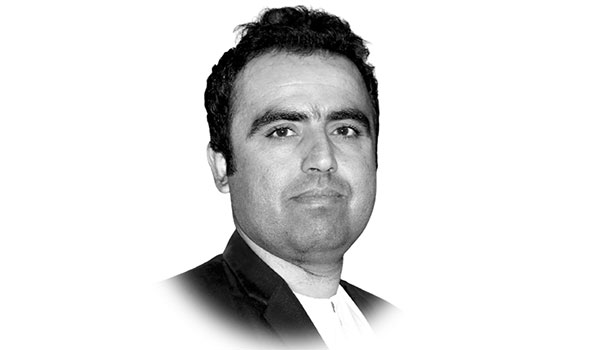Why is climate diplomacy a prerequisite in Indo-Pak ties?
THE climate crisis in the prevailing century is a huge challenge for humankind, encompassing overwhelming geo-political and geo-economic ramifications for the whole world.
The temperature across the world is increasing with the steep rise due to greenhouse gas emissions resulting in the rise of sea levels, drying up water sources and threatening the life and livelihood of the people.
Against this backdrop, developed states are reassessing their policies, paying a great deal of attention to climate diplomacy to protect humanity from further devastation.
Climate diplomacy is a diplomatic tool aimed at reducing the negative impact of climate change, decreasing greenhouse gases and embarking on a path to peace, stability and prosperity.
South Asia is one of the most climate-prone regions of the world. Between 1990 and 2008, in South Asia, approximately 750 million people, nearly 50% of the region’s population, were severely affected by climate-related incidents, causing almost 230,000 deaths.
India and Pakistan are the world’s 5th and 7th most vulnerable countries to climate change respectively. Pakistan in the context of geopolitics is believed to have been well placed. But from the ecological perspective, the country geographically is located at the highest disaster risk levels.
Pakistan in 2019 ranked 18 out of 191 countries on the Inform Risk Index. The country has increasingly been experiencing recurrent floods and heat waves.
The agriculture sector of Pakistan is a fuel of the economy contributing nearly 25 per cent to the GDP and producing 45 per cent of jobs in the country. Bear in mind, the agriculture sector is the most climate-prone.
In the last 60 years, Pakistan in 2022 recorded its warmest March. Experts are of the view that the country’s vulnerability to climate change is increasing due to its proximity to India and China.
Beijing and New Delhi cause the rapid melting of glaciers in the Himalayas. The excessive utilization of forests and burning of fossil fuels is believed to have been releasing sufficient greenhouse gases polluting the atmosphere causing floods, droughts, tropical storms and wildfires, in South Asia in general and Pakistan in particular.
Senator Sherry Rehman, Federal Minister for Climate, endorses that climate change is a matter of national security for Pakistan.
More worryingly, climate change is impacting Pakistan’s economy, the losses to the GDP are foretold to be at 6-8 per cent.
Meanwhile, the sea level by 2050 in India is predicted to be rising to around 15–38 centimetres which will affect its major cities Mumbai, Kolkata and Kochi.
The land erosion will further intensify India’s worries, its nearly 26 per cent coastline is prone to land erosion losing approximately 450 hectares of land annually.
The heat waves of 2022 badly impacted Indian wheat production. Scientists believe heat-waves are extremely likely to be intensified by 15 per cent by 2030.
As far as the report of Mckinsey is concerned “heat-waves translate into a projected 2.5 per cent to 4.5 per cent, or $150 billion to $250bn, the risk to the country’s gross domestic product”.
Gaurav Kediaa, who is Chairman of the Indian Biogas Association, argues that “The overall impact of climate change on the Indian economy is manifold as it will affect agriculture, infrastructure, as well as human health,” Like Pakistan’s agricultural sector, India too heavily depends on its agriculture, the country’s half population gets the bread and butter from the agricultural sector, the sector accounts 20 per cent to the GDP.
Kediaa opines that “India being an agricultural economy and already burdened with population overgrowth needs to take climate change seriously”.
India is the largest user of groundwater in the world currently confronting water scarcity and has merely four per cent of the world’s total usable water resources.
Climate change, water scarcity and greater variability in precipitation reckon to be the bona fide factors behind the acceleration of poverty and hunger in India.
A few pertinent questions arise here. Can Pakistan and India further overlook the aforementioned devastation caused by climate change? Are Islamabad and New Delhi still unwilling to reduce their unnecessary obsession with so-called conventional threats? Don’t they think that climate diplomacy is a blessing in disguise that will nip the enduring rivalry between the two arch-rivals in the bud?
Ostensibly, in international politics security threats in the last millennia underwent a tremendous transformation.
At the current juncture, climate change is a bigger threat than traditional threats. The developed states are reassessing their policies and pondering over the threats emanating from climate change.
Surprisingly, Pakistan and India are unique states in the 21st century, eager in conventional security and have been embroiled in enduring rivalry for the last 75 years.
Though both states are overwhelmed by the theory of realism, believing in the maximization of powers at the expense of overseeing climate change, human development and prosperity of the region, they will have to bring home very soon the sceptical views of the realism theory.
Critics of realism theory believe that states in the international arena overshadow non-traditional threats (climate change), economic interdependence and intra-state warfare. Arguably, overlooking the critics of the realism theory continued the hostility for the last 75 years.
It is high time to incorporate the critics of theory in the foreign policies of both states with the aim of promoting climate diplomacy to start a new chapter of friendship.
—The writer teaches in the IR Department, University of Balochistan, Quetta.









